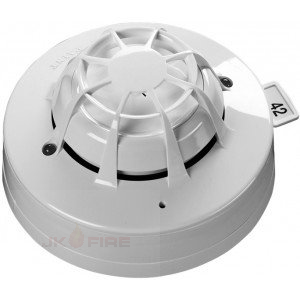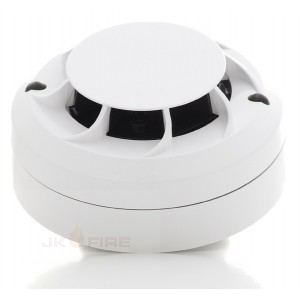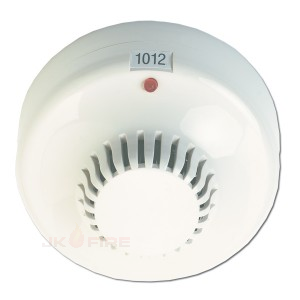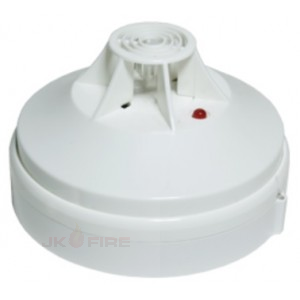Mode 1 – has very high smoke sensitivity combined with high heat sensitivity. This gives a high overall sensitivity to both smouldering and flaming fires.
Mode 2 – has a smoke sensitivity similar to that of a normal optical smoke detector. This mode is therefore equivalent to a standard optical detector. It is suitable for applications in which wide temperature changes occur under normal conditions.
Mode 3 – has moderate smoke sensitivity combined with a moderate sensitivity to heat. This combination is considered the optimum for most general applications since it offers good response to both flaming and smouldering fires.
Mode 4 – has lower than normal smoke sensitivity combined with high heat sensitivity. This makes it suitable for applications in which a certain amount of fumes or smoke is considered normal.
Mode 5 – has no smoke sensitivity at all but gives a pure heat detector response meeting the response time requirements for a Class A1R detector in the European Standard EN 54- 5. In this mode the detector will respond to slowly changing temperatures and has a ‘fixed temperature’ alarm threshold at 58OC. The analogue value in this mode will give the approximate air temperature over the range 15OC to 55ºC. In Mode 5 the smoke sensor is still active though it does not contribute to the analogue signal. As a consequence, if the detector is used in a dirty or smoky environment the optical sensor drift flag may be activated in the heat only mode.; Ideal for a wide range of applications
Enhanced false alarm management
Recommended, in specific modes, for hotel bedrooms and hospital wards
Unaffected by wind or atmospheric pressure
Well-suited to sensitive environments
Five EN 54 approved response modes
Heat only and optical only options
Remote test feature






